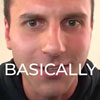EDUCATION CONNECTION BRINGS YOU HUNDREDS OF SCHOOLS, THOUSANDS OF PROGRAMS AND MILLIONS OF MATCHES.

It’s Fast
Simply tell us here at Education Connection a little bit about yourself and your goals by answering a few questions –it only takes a few minutes!

It’s Easy
Education Connection will instantly select schools for you based on your educational needs and goals.

It’s Free
Education Connection is FREE! There’s no cost, risk or obligation – just a chance to enhance your credentials and change your life.
WHAT DO STUDENTS SAY ABOUT EDUCATION CONNECTION?
Education Connection just really made it nice and easy for me to get enrolled into college and start doing what I love doing.”
Dennis Lippiett-Scanton, PA














